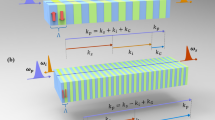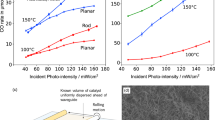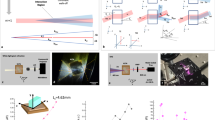Abstract
THE use of optical wedges in photometry is so convenient and accurate that they are now being largely employed, but their use is, at present, mostly confined to the visible region. Dr. Toy (Phil. Mag., 1920) showed that wedges of neutral grey gelatine between quartz plates could be used down to about 3000Å.U., but the absorption coefficient, and hence the wedge-constant, was increasing so rapidly with decreasing wave-length, that they would probably become useless beyond about 2900Å.U.
This is a preview of subscription content, access via your institution
Access options
Subscribe to this journal
Receive 51 print issues and online access
$199.00 per year
only $3.90 per issue
Buy this article
- Purchase on SpringerLink
- Instant access to full article PDF
Prices may be subject to local taxes which are calculated during checkout
Similar content being viewed by others
Author information
Authors and Affiliations
Rights and permissions
About this article
Cite this article
DOBSON, G., HARRISON, D. Ultra-Violet Photometry. Nature 117, 724 (1926). https://doi.org/10.1038/117724c0
Issue date:
DOI: https://doi.org/10.1038/117724c0



